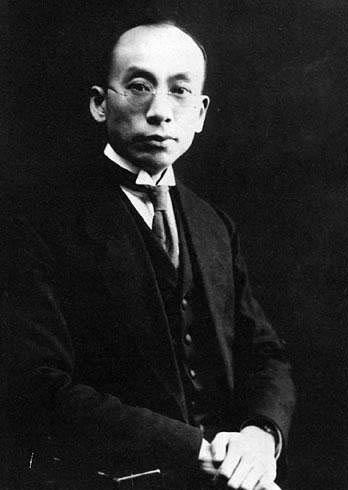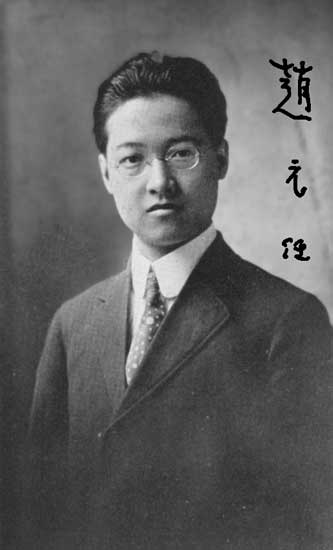
Western Classical Practices in Conservatories
The music of the court, the nobility, and the literati offered traditional forms of elite culture. Some imported Western music also achieved elite status during the early decades of the twentieth century (see Jones 2001: 32-33). This was primarily the music used in classical music concerts and in music education.
Conservatory-trained composers emerged in China in the late 1920s and 1930s, led by musicians like Xiao Youmei (1884-1940) and Zhao Yuanren (1892-1982). Influenced by the May Fourth Movement, during which Western techniques were used to reshape certain aspects of Chinese traditional culture (Luo 1990: 2-4), these composer's works feature an innovative combination of Western and Chinese traditional music styles. Xiao Youmei studied classical music in Germany and Japan. His representative art song "Asking" is based on German classical compositional techniques, such as developmental variation. For instance, its first three phases each begin with an upward leap: the first is of a sixth, the second of a fifth, and the third of a fourth.
Zhao Yuanren was a well-known linguist, and an expert in the characteristics of Chinese local dialects. In his book Song Collection for New Poetry, Zhao advocates learning and implementing Western compositional techniques, and combining them with Chinese features in pursuit of the so-called 'imposing style' (Zhao 1933: preface). As to how to build this 'imposing style', Zhao proposed that musicians should explore 'Chinese style' harmony, create melodies based on pentatonic scales, and deal carefully with the relationship between lyrics and melodies by paying close attention to speech tone and other characteristics of Chinese language. For instance, Zhao's well-known piece "How Can I Help but Think of You" is entirely based on a traditional Chinese pentatonic scale and the last phrase in every verse 'Jiao wo ruhe bu xiang ta' ('How can I help but think of you') uses variations based on an instrumental interlude found in jingju opera.
The song's melodic content fits well to the speech tones of the lyrics, and longer (compound) vowel sounds, as found in the words 'jiao' and 'xiang', are matched to longer rhythmic durations in the music. Western techniques used in this piece include 3/4 time (which is quite rare in Chinese traditional pieces), anacrusis, and key transitions (Qian Lijuan 2011: 105-106; Tu Jingying 2008: 241-243).
As Kraus has noted, the piano has surpassed Chinese traditional instruments in popularity over the last two decades (1989). As an icon of European music, the piano has a strong aesthetic appeal of its own. Playing it has become a manifestation of the Chinese people's ability to participate in what they perceive as superior manifestation of European fine arts. Learning the piano has become a sought-after symbol of high social status for most middle-class families in urban areas (Lau 2008: 95). Nowadays, even small villages of a little over one hundred households, like the Miao village Heinigou in Yunnan province-an economically under-developed area in China-have a piano teacher as well as several piano students (fieldwork notes, Qian Lijuan, November 2017). A female Pumi musician Li Haishu, said in an interview that she couldn't recruit many students for the Pumi instrument sixian even though she teaches it free of charge. Meanwhile, local rich families are happy to pay for piano or violin lessons for their children (personal communication, 14 April 2018, Lanping county).





Hong Kong film stars Sammo Hung and Jackie Chan were classmates at the Beijing Opera School in Hong Kong.







